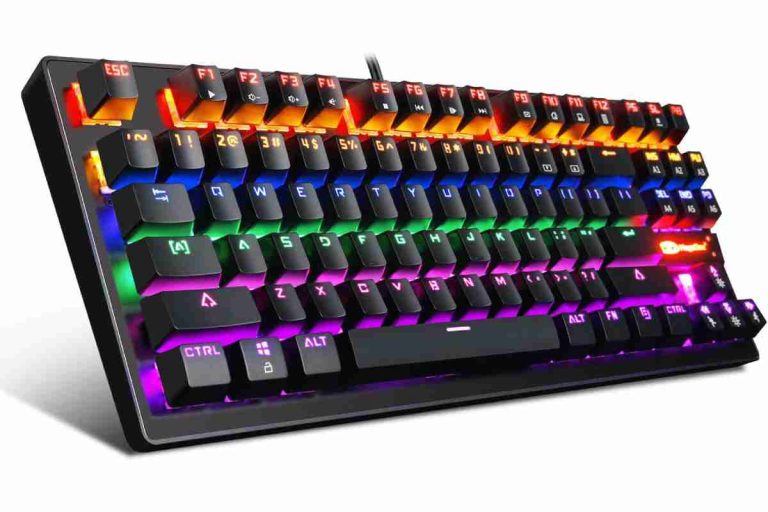Table of Contents
What is the keyboard?
- The keyboard is a peripheral or input device or input (input) information.
- It is a set of keys or buttons arranged horizontally on a sheet, which act as levers mechanical or electronic switches.
- And also, it allows the user’s entry of information encoded to the computer system.
Keyboard Features
- The keyboards operate using a microcontroller’s operation, equipped with its software.
- It is capable of carrying out matrix scans each time we press a key and thus knowing which one it was and what character or function corresponds.
- It occurs by assigning different keys a numerical value through a code linked to its physical position, called the Scan Code.
- This code, for example, is different when we press various keys at the same time.
- It allows the composition of many more signs than are drawn on the keyboard.
- On the other hand, keyboards can communicate with the system differently, depending on whether they physically separate from the CPU, laptops. They are part of it.
- There are wireless keyboards that use it for WiFi technology, while others are faithful to the connecting cable.
- Even removable models allow all users to handle the different blocks that compose it separately physically.
Types of Keyboards
- The most straightforward and easy way to classify keyboards is by looking at their physical form, structure, and industrial design.
- Thus, we have the following cases:
1. Classic keyboards
- Those that are rectangular and follow the aesthetics of the standard IBM keyboard.
2. Ergonomic keyboards
- Those designed to fit the shape of human hands and not cause as much damage to their joints.
3. Multimedia keyboards
- It can have direct access keys to different.
- The computer system’s various functionalities, especially those that have to do with its audio, video, connectivity, or even specific applications
4. Flexible keyboards
- They produce from lightweight elastic materials, such as silicone or soft plastic.
- Therefore, they can fold back on themselves, adapt to uneven surfaces, or even submerging in water without affecting their functionality.
5. On-screen keyboards
- It does not exist physically but projects on a touch screen or touch screen and presses directly.
6. Membrane keyboards
- Discontinued due to low resistance to use, they consist of two thin plastic sheets or membranes.
- Equips with conductive tracks on the inside, the electronic signal was allowed to pass when pressing with the finger.
Keyboard distribution
- Similarly, there are different critical layouts on the keyboard, depending on the language it is in the manufacturer company and the computer model.
- The West’s standard is the IBM keyboard, in its QWERTY layout, named for being the first three letters of the alphanumeric block.
- This distribution comes from the Anglo-Saxon typewriters.
- It intends for English, but later it was moved to other languages, adding accents and special characters such as the Spanish or the Portuguese.
- However, this layout criticizes from an ergonomic point of view.
- There are friendlier alternatives like Colemak, Carpalx, or Workman, which put less strain on the hands, or the Dvorak Simplified Keyboard.


